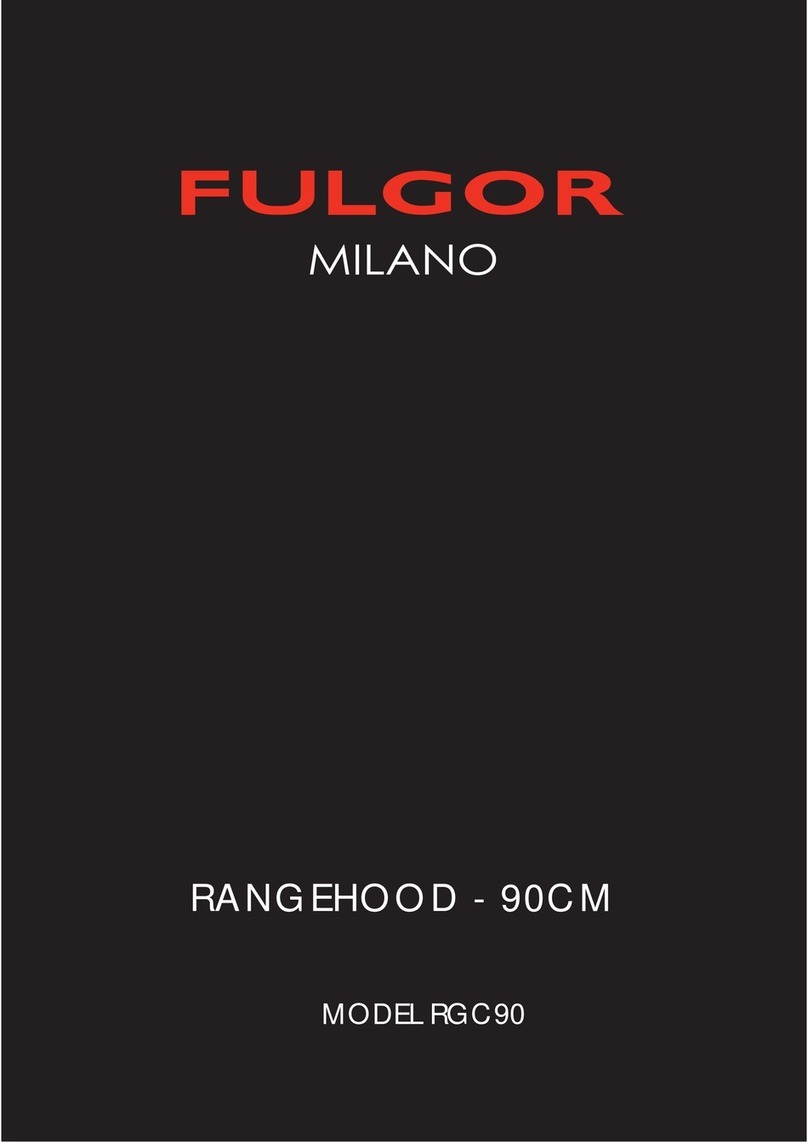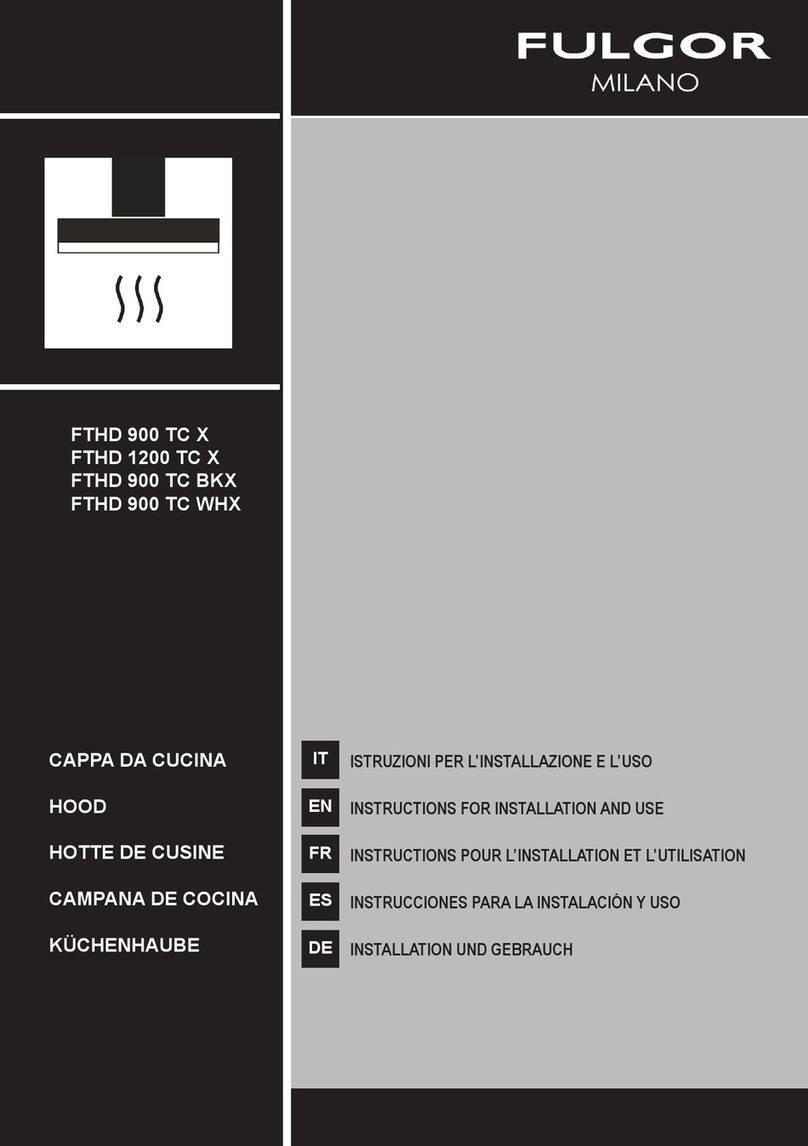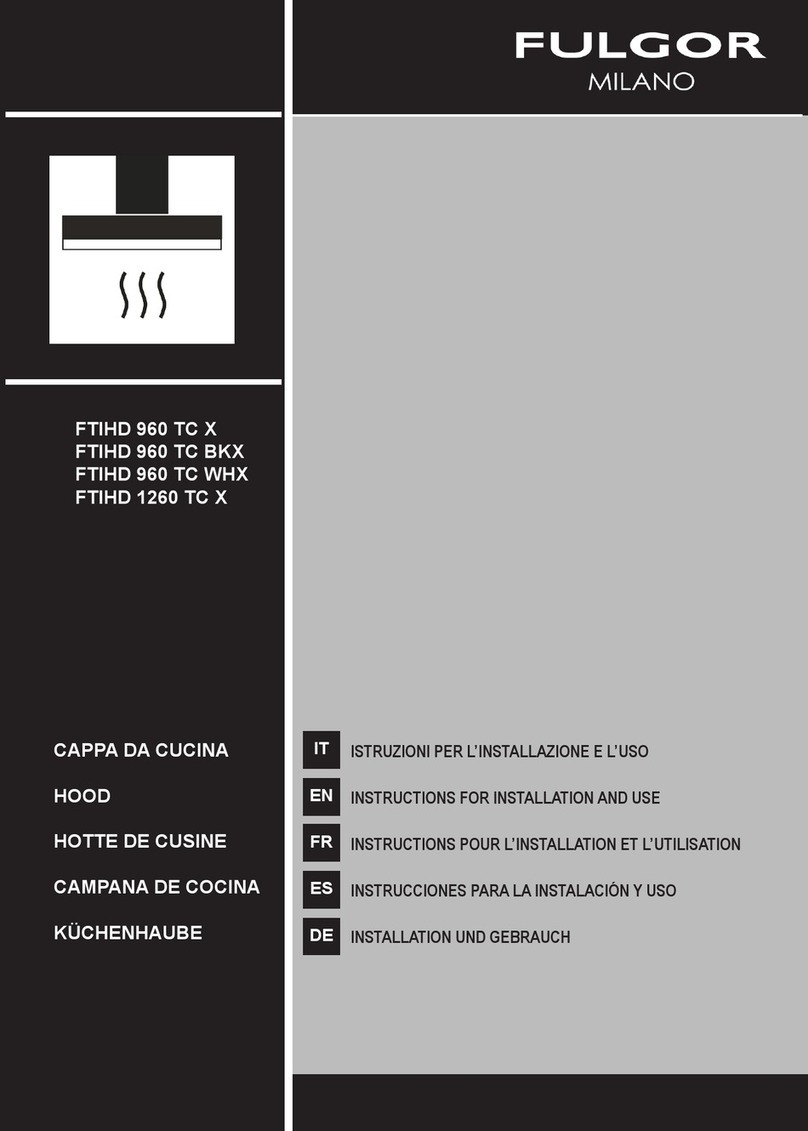
VERSIONI D’USO
L’apparecchio è già predisposto sia per la versio-
ne ltrante sia per la versione aspirante.
* Nella versione ltrante (dis.1) l’aria ed i vapori
convogliati dall’apparecchio, vengono depurati
sia da un ltro antigrasso sia da un ltro al car-
bone attivo e rimessi in circolazione nell’ambien-
te attraverso le griglie laterali del camino. Nella
versione ltrante si consiglia l’uso di un deviatore
aria (dis.1A), che posto nella parte superiore del
tubo permetta il riciclo dell’aria nell’ambiente.
* Nella versione aspirante (dis. 2) i vapori ven-
gono convogliati direttamente all’esterno dell’abi-
tazione tramite l’uscita aria superiore o poste-
riore. L’utilizzo sia del ltro al carbone sia del
deviatore aria non è necessario.
Vericare che tutti i componenti non siano dan-
neggiati, in caso contrario contattare il rivenditore
e non proseguire con l’install zione.
Prima di installare il prodotto leggere attentamen-
te tutte le istruzioni di seguito riportate:
- Utilizzare un tubo evacuazione aria che abbia
la lunghezza minima possibile, limitato numero di
curve, materiale approvato normativamente.
- Evitare cambiamenti drastici di sezione (diame-
tro costante consigliato Ø 150 mm o pari super-
cie).
- Per il mancato rispetto delle precedenti istruzio-
ni la ditta fornitrice non risponderà per problemi di
portata o di rumorosità e nessuna garanzia sarà
prestata.
Tutti i prodotti sono stati progettati con la possi-
bilità di orientare l’uscita aria nel lato posteriore
del prodotto; nel caso si intenda utilizzare questa
funzione occorre rimuovere le n° 10 viti del sup-
porto gruppo aspirazione (dis. 3 ), quindi estrarre
il gruppo aspirazione e ruotarlo in modo da orien-
tare il boccaglio uscita aria verso il lato posteriore
del prodotto (dis. 4), successivamente ricollocare
il gruppo aspirazione nella propria sede e ripristi-
nare le viti rimosse in precedenza.
9
INSTALLAZIONE
Utilizzando l’apposita maschera di foratura (dis.
5A), effettuare i fori per l’installazione della staffa
a muro; I prodotti devono essere posizionato a
400mm dal piano cottura.
Fissare le staffe a muro alla parete utilizzando i
tasselli e le viti in dotazione.
Agganciare il corpo aspirante (dis. 6) alle staffe a
muro precedentemente ssate.
Installare le quattro viti di ssaggio in corrispon-
denza dei fori posti nella parte superiore del pro-
dotto (g. 7). Avvitare la vite anteriore in modo
da assicurare il prodotto alla parete, successiva-
mente vericare che la cappa sia perfettamente
in piano, in caso contrario agire sulle viti poste-
riori avvitando quella di destra per alzare il lato
destro della cappa, oppure avvitando quella di
sinistra per alzare il lato sinistro della cappa.
Effettuare il collegamento elettrico.
Azionare la salita del pannello in vetro come
indicato al capitolo funzionamento; a completa
apertura del pannello, che avviene impostando la
velocità di aspirazione IV, estrarre la griglia come
da (g. 8), rimuovere i ltri antigrasso e utilizzan-
do le viti interne (dis. 9 ) assicurarsi che la cappa
sia bloccata alla parete.
Ripristinare il ltro antigrasso, la griglie e richiu-
dere il pannello frontale impostando la funzione
OFF come indicato nel capitolo funzionamento.
Versione aspirante (uscita superiore)
Mediante i tasselli e le viti in dotazione ssare alla
parete e/o al softto la staffa supporto tubo (dis.
10), in posizione centrale rispetto la cappa.
Collegare la angia uscita aria del motore al foro
di evacuazione tramite un tubo adatto.
Effettuare il collegamento elettrico. Posizionare
i due tubi decorativi sopra al corpo aspirante;
sollevare il tubo interno afnché arrivi al softto;
quindi ssarlo alla staffa supporto tubo utilizzan-
do n° 2 viti autolettanti in dotazione.
































